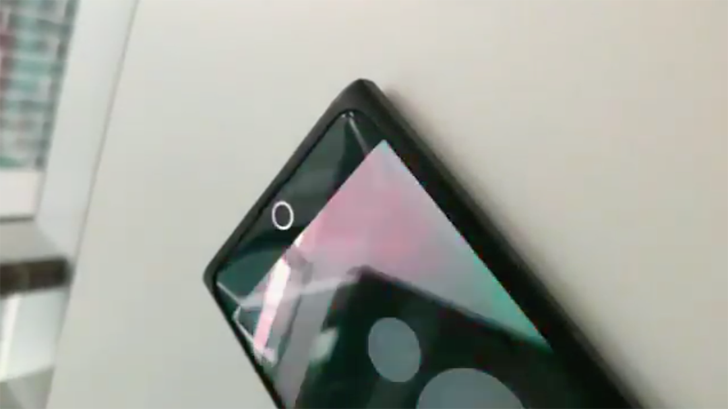Read update
- Xiaomi's senior vice president Wang Xiang tweeted out some more details about the underlying technology. The prototype display has a small area at the top that becomes transparent when the camera is activated, allowing light to pass through. It's made of "special low-reflective glass with high transmittance." Other than that, you shouldn't notice anything different from a regular display when you're not taking selfies. Wang Xiang even writes that this method should allow you to take better photos than "pinhole camera solutions," as you have a bigger area for light to fall in. Thanks, Sandy!
Notches have been a design abomination ever since they were introduced, cutting into usable display area for no other reason than to minimize bezels. However, we knew from the start that notches were never here to stay – they're an interim solution meant to bridge the industry's move towards completely obstruction-free displays on the front of phones. The same is true for finicky sliding mechanisms for front cameras that come with disadvantages such as limited water resistance and yet another point prone to failure. Today though, Oppo has tweeted a video of its prototype under-display front camera, giving us a glimpse into the promised land (of bezel-less screens).
As you can see in the embedded video above, the prototype feels very janky, and the software doesn't appear to be too optimized, but it's a working proof of concept. When the video host enters the camera software, he's greeted by a little loading animation in the top middle of the display, the place where the lens is presumably placed. After loading up the interface, the whole top of the screen stays blank, but we can see a working viewfinder below it. To prove that it's really the invisible front camera that's producing this image, the presenter briefly holds his finger above the position of the lens, and lo and behold – the finger does indeed show up on the screen. And in case you don't have enough yet, leaker Ice Universe shows us the same prototype from yet another angle. Here, we can see more clearly how slow the software currently is, since this video is sped up quite a bit.
Oppo isn't the only firm working on this tech, though. Xiaomi was quick to fire right back at its competitor, presenting a similar prototype next to a notched phone. We've also heard reports of various other companies developing these cameras, among them Samsung, but so far, Oppo's and Xiaomi's presentations remain the first officially available demonstrations.
Let me dampen the excitement just a little bit though. Both Oppo's and Xiaomi's videos are particularly low quality, and both don't give us a high-res look at the photos taken. This could be an indication that the picture quality is significantly lower than what we're used to from current cameras, unobstructed by layers of display on top of them. It might even take a couple of generations until they come close, as has been the case with in-screen fingerprint readers and their capacitive counterparts. Still, this public demonstration shows that the companies are confident about their technology, and probably both hope to be the first in line when it comes to mass-producing the first under-display cameras.
UPDATE: 2019/06/03 5:28am PDT BY MANUEL VONAU
Xiaomi's senior vice president Wang Xiang tweeted out some more details about the underlying technology. The prototype display has a small area at the top that becomes transparent when the camera is activated, allowing light to pass through. It's made of "special low-reflective glass with high transmittance." Other than that, you shouldn't notice anything different from a regular display when you're not taking selfies. Wang Xiang even writes that this method should allow you to take better photos than "pinhole camera solutions," as you have a bigger area for light to fall in. Thanks, Sandy!
Thanks: That Tech Though

